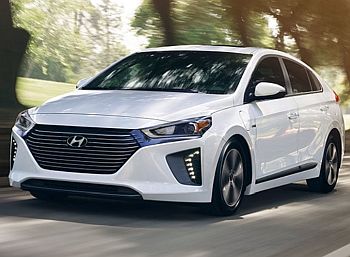
By Andrew Boada, Editor at Large
More and more fleets are getting on board the zero emissions bandwagon these days, and so are accepting TCOs that are higher than those for fossil-fuelled cars and trucks in order to acquire electric vehicles. And while it’s true that at the tailpipe, hybrids (HEVs) and battery-electric vehicles (BEVs) emit fewer no greenhouse gas emissions, the bigger picture reveals another story.
The truth – which may be a surprise to some and appear to be heresy to others – is that when you consider the proverbial bottom line, both financially and environmentally, internal combustion vehicles (ICEVs) may be the way to go for fleets, at least for most locations and for the time being. This will take some explaining, but it comes down to this: manufacturing and powering EVs each entail the creation of greenhouse gases.
Tailpipe emissions aren’t the whole story: “Upstream emissions”
Battery electric vehicles (BEVs) are officially classified as “zero emissions vehicles” because they don’t produce tailpipe emissions, but it’s something of an open secret that that isn’t quite the end of the story. The energy stored in their batteries has to come from somewhere, and when that somewhere is a fossil fuel-burning power plant – which is almost always the case – the BEV is on the hook for the resulting CO2 emissions.
Emissions of this kind are called “indirect”, or “upstream” emissions. Just how large they are for BEVs depends on several factors, but by far the biggest is how CO2-intensive the electricity supply is where they’re typically charged.
ICEVs and HEVs also have upstream emissions. These are produced during the refining of crude oil into diesel and gasoline, as well as in the transportation of these fuels to market. They’re typically estimated to add an additional 20% on top of the emissions produced at the tailpipe.
To see what this means, let’s compare the Hyundai Ioniq HEV (the non-plug-in version) with the Hyundai Ioniq BEV and see what happens when the BEV is operated in the cleanest electric grid and in the dirtiest grid in the US. (By the way, the cleanest is in upstate New York, which is heavily dependent on nuclear and hydro-electric power, and the dirtiest is in Wisconsin, which is dominated by coal-power electricity plants). In this comparison, I’ll be looking at average emissions per mile, and I’ll assume a lifetime of 125,000 miles for the HEV and of 100,000 miles for the BEV.
Operating in the clean Upstate New York grid, the electric-only Ioniq BEV produces no direct emissions, but produces a lifetime average upstream emissions of 39 grams of CO2 per mile (gCO2/mi). This is equal to the emissions produced by an ICEV with a fuel economy rating of almost 275 mpg.
In the dirty Wisconsin grid, the Ioniq BEV again creates no direct CO2 emissions, but produces a lifetime average upstream CO2 emissions of 219 gCO2/mi, giving it the emissions equivalent of a 49 mpg fuel economy rating. That’s less than one-fifth of the fuel economy of the same vehicle in upstate New York, a really stunning falloff.
Now let’s consider the gasoline-electric Ioniq HEV. This is a hybrid that doesn’t plug into the grid, so it isn’t affected by the CO2 intensity of electric power grids. Instead, its emissions are determined by its fuel economy, which is rated at a combined 58 mpg. Over its assumed lifetime, that equates to an emissions rate of 184 g CO2/mi in any state, of which 153 gCO2/mi is emitted directly from the tailpipe and the remainder produced as upstream emissions.
Right away, it’s easy to see how big an impact the CO2 intensity of the electricity supply has on the BEV. In Wisconsin, the HEV version of the Ioniq – which is cheaper than its BEV counterpart by several thousand dollars – is a better choice than the BEV if the object is to minimize total emissions associated with operating the vehicle: the HEV generates 184 g CO2/mi compared to the BEV’s 219, and the HEV is cheaper to acquire.
Embedded emissions: building the car
A second source of vehicle emissions is the manufacturing process, and it should come as no surprise that whether it’s an ICEV, an HEV or a BEV, their manufacture results in greenhouse gas emissions whenever the combustion of fossil fuels is involved in some way. These are referred to as embedded emissions.
When it comes to their basic components, the embedded emissions of ICEVs, HEVs and BEVs are approximately equal. BEVs account for much more, however, because making their batteries is far more energy- intensive, and so increases their embedded emissions significantly, by as much as 40 to 75 percent.
Now let’s apply this difference to our look at the two Hyundai vehicles above. With embedded emissions taken into account, the total carbon footprint of the Ioniq BEV in upstate New York is equivalent to an ICEV fuel economy of 74 mpg, but only 33 mpg in Wisconsin; in the median state, it’s 43 mpg, which is roughly equal to the BEV’s median state average mpg rating.
What does this mean for fleet managers?
This analysis provides a very rough estimate of what the true combined emissions of these vehicles will actually be in the real world, and the above numbers shouldn’t be taken as more than a rough guide. Having said that, I think this model illustrates a few points fairly nicely.
Firstly, at a national level, BEVs are not necessarily “greener” than a comparable hybrid. A quick leaf through sale prices will confirm that HEVs are cheaper though, at least before BEV subsidies, where available.
The pivotal factor is whether the electricity produced in the driver’s area is relatively clean or not. Right now, only nine of the 26 electric grid subregions in the US are sufficiently decarbonized to render the BEV unambiguously greener than a fuel efficient HEV. In the other 17 subregions, the HEV produces emissions that are either comparable to the BEV’s, or are lower, and at a lower MSRP acquisition cost.
Secondly, this little model shows how significantly embodied emissions contribute to BEV’s total emissions. Clearly, if they’re going to live up to the name “Zero Emissions Vehicle”, the manufacturing carbon footprint of batteries will need to come down significantly. When and if that happens will depend either on the Chinese, who make most of these batteries , cleaning up their national energy base, or the manufacturing base moving to other parts of the world that have cleaner energy.
BEV or HEV for your next acquisition?
So, what’s the better vehicle for fleet managers to acquire? Here are my two cents.
Unless you live in places serviced by very low carbon-intensive, the emissions you avoid by buying electric vehicles are likely to be quite modest, if any. Therefore, I think the chief consideration comes down to cost and the utility of the vehicle, and here neither case is easy to make for the BEV. BEVs are currently much higher TCO vehicles, especially over fleets’ typical four-year holding period. Without subsidies, the economic argument simply isn’t there.
The utility argument is also hard to make, as there is a big difference in the range that BEVs and HEVs achieve. The vehicles I looked at here provide a good example: the Ioniq EV, with a full charge, provides a range of 124 miles under ideal driving conditions, less than one-fifth of the Ioniq HEV’s 690 miles. Another thing to consider is that while steep terrain and seasonal weather will shorten those ranges, they will have a more dramatic and less predictable effect on the BEV.
On the plus side, BEVs almost always have a small fuel cost advantage over hybrids and ICEVs, but it is almost never anywhere near large enough to make up for their sticker prices, which are typically higher by several thousands of dollars. Subsidies can change this part of the financial analysis if they’re available where you live.
The bottom line: if fleets are really committed to reducing their carbon footprint, they have to know where BEVs actually contribute to that goal. And considering that ICEVs’ fuel economy is rising and their TCO beats all EVs, for now fleets can’t be blamed for sticking to old technology.



